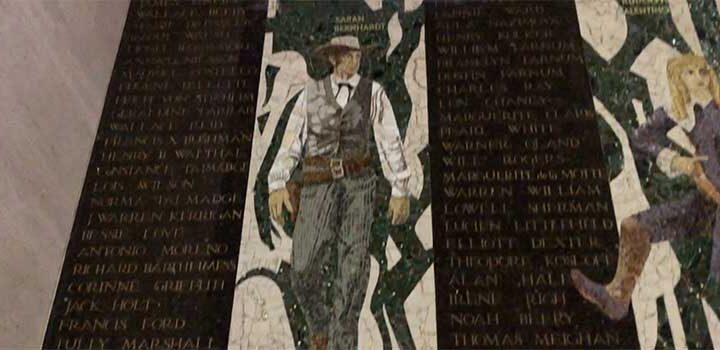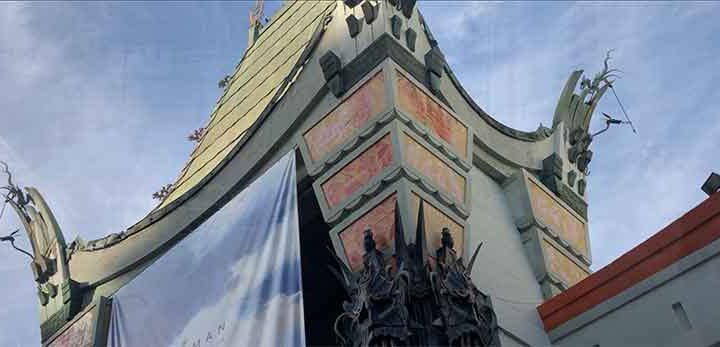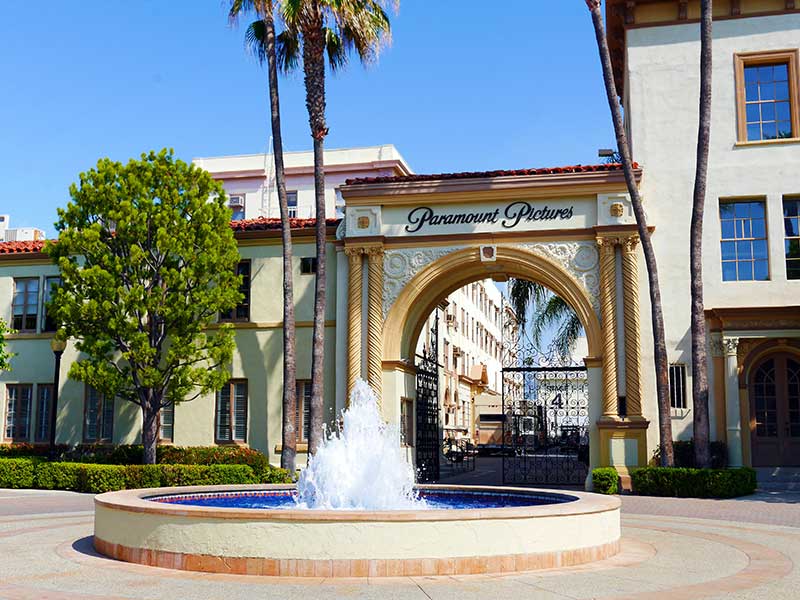Tours of Hollywood Palladium are once-in-a-blue-moon events, so when Star Track Tours had the opportunity (thanks to the Hollywood Chamber of Commerce) to tour the newly-renovated Palladium (including backstage) we jumped at the chance!

Tour of Hollywood Palladium VIP Room
The Hollywood Palladium, nestled along the bustling Sunset Boulevard in Los Angeles, stands as a living testament to the grandeur and cultural legacy of Hollywood’s entertainment scene. Since its grand opening in 1940, this iconic venue has been a cornerstone of the city’s cultural fabric, hosting a kaleidoscope of events that have shaped the musical, social, and historical landscape of Los Angeles.
Designed by the esteemed architect Gordon B. Kaufmann, whose portfolio includes other notable landmarks like the Hoover Dam and the Los Angeles Times Building, the Hollywood Palladium was conceived during the era of Art Deco architecture. The façade of the Palladium is a splendid display of sleek lines, bold curves, and intricate geometric patterns, all hallmarks of the Art Deco movement that dominated design aesthetics in the 1920s and 1930s. This architectural gem seamlessly blends into the glamour and sophistication of Hollywood’s golden age, serving as a visual beacon that beckons both history enthusiasts and entertainment aficionados alike.
One of the Palladium’s defining features is its grand ballroom, a sprawling space with a high, elegantly embellished ceiling and a meticulously designed sprung floor. This ballroom, originally intended as a dance hall, became the epicenter of the Swing Era during the 1940s. The Palladium’s early years were marked by the rhythmic beats of big band music, and the venue became synonymous with the vibrant energy of swing dancing. Legendary bandleaders and orchestras, including those of Tommy Dorsey, Benny Goodman, and Glenn Miller, graced the stage, leaving an indelible mark on the venue’s identity.
The Palladium’s association with the Swing Era contributed significantly to its reputation as a premier entertainment destination. The dance floor witnessed the graceful movements of swing dancers, and the music resonated with the spirit of the times. The venue became not just a place for musical performances but a cultural melting pot where people from various backgrounds converged to revel in the music and dance that defined an era.
As the decades unfolded, the Hollywood Palladium evolved with the changing tides of popular culture. The 1950s brought a shift in musical preferences, and the venue adapted accordingly. It became a hub for rock and roll acts, hosting performances by groundbreaking artists such as Little Richard and Chuck Berry. The 1960s saw the rise of the British Invasion, with bands like The Beatles leaving an indelible mark on global music culture. While the Palladium may not have hosted The Beatles, it did become a stage for other influential acts of the era, solidifying its status as a versatile and ever-relevant venue.
In the subsequent decades, the Hollywood Palladium continued to be a dynamic force in the entertainment world. The 1970s brought the sounds of disco, funk, and soul to its stage, with artists like James Brown and Earth, Wind & Fire igniting the dance floor. The venue also played a crucial role in the punk rock scene during the late 1970s and early 1980s, hosting legendary performances by bands like The Clash and The Ramones.
The 1990s and beyond saw the Palladium embracing a wide spectrum of musical genres, from alternative rock to hip-hop. Its stage became a showcase for emerging artists as well as established acts, maintaining its relevance in an ever-evolving musical landscape. The Palladium’s commitment to diversity in its lineup ensured that it remained a destination for music enthusiasts with eclectic tastes.
Beyond its musical significance, the Hollywood Palladium has been a witness to historical and cultural moments. During World War II, the venue transformed into a hub for patriotic events and bond rallies, reflecting the nation’s unity in times of global conflict. Its ability to adapt to the needs of the community and the country showcased the venue’s resilience and importance beyond the realm of entertainment.
The Palladium’s allure extends beyond its storied stage performances. The venue has been featured in films, television shows, and documentaries, becoming a symbol of Hollywood’s glamorous history. Its timeless aesthetic, with the iconic marquee lighting up the night, has graced the silver screen, further embedding its image in the popular imagination.
In 2008, the Hollywood Palladium underwent a significant renovation to enhance its facilities while preserving its historic charm. The restoration project focused on maintaining the venue’s original character, with improvements to acoustics, accessibility, and overall audience experience. This commitment to preserving the Palladium’s legacy ensures that future generations can continue to appreciate its cultural significance.
Today, the Hollywood Palladium stands as a vibrant and dynamic cultural landmark. Its marquee still beckons music enthusiasts from all walks of life, promising an unforgettable experience within its hallowed walls. The venue’s adaptability, from swing dancing in the 1940s to contemporary rock and hip-hop performances, showcases its enduring relevance in the ever-changing landscape of popular music.
The Hollywood Palladium is not merely a concert venue; it’s a living archive of the city’s cultural evolution. Its walls resonate with the echoes of past performances, the laughter of diverse audiences, and the collective heartbeat of a community connected through the universal language of music. As the Palladium continues to host events that captivate and inspire, it ensures that its legacy as a cultural icon in the heart of Hollywood will endure for generations to come.














